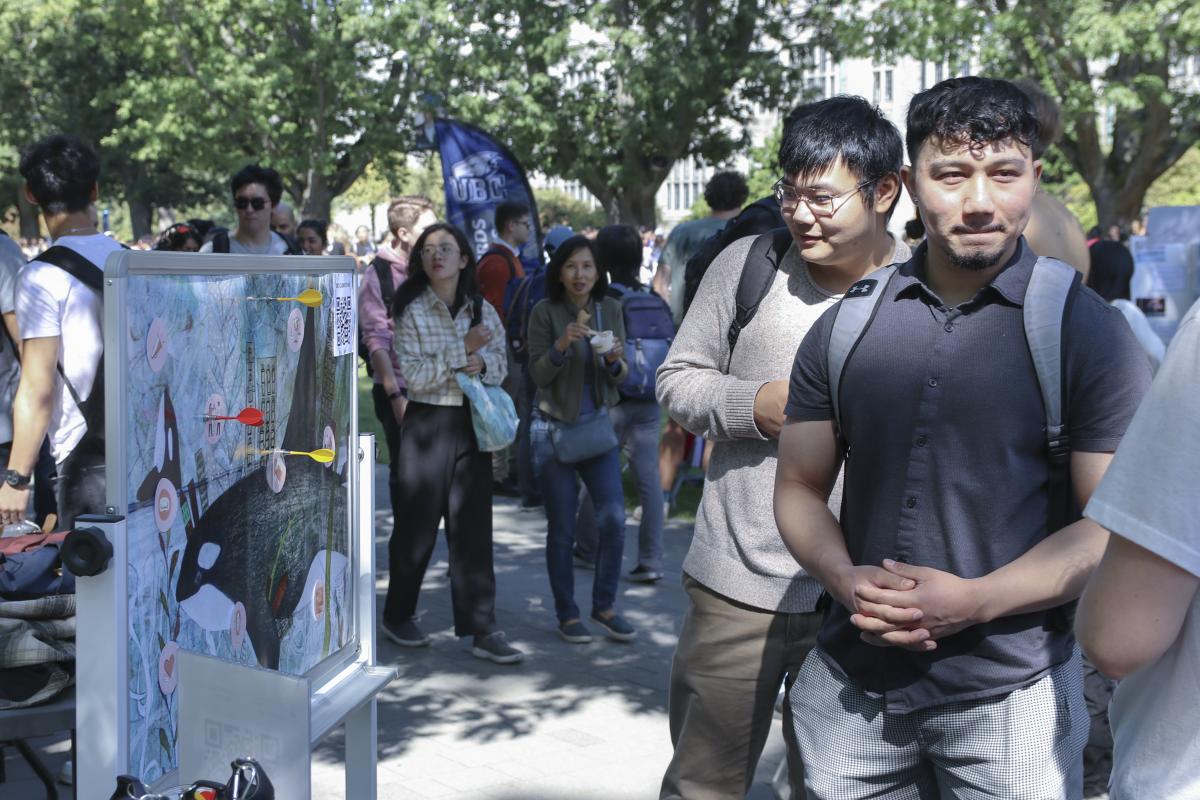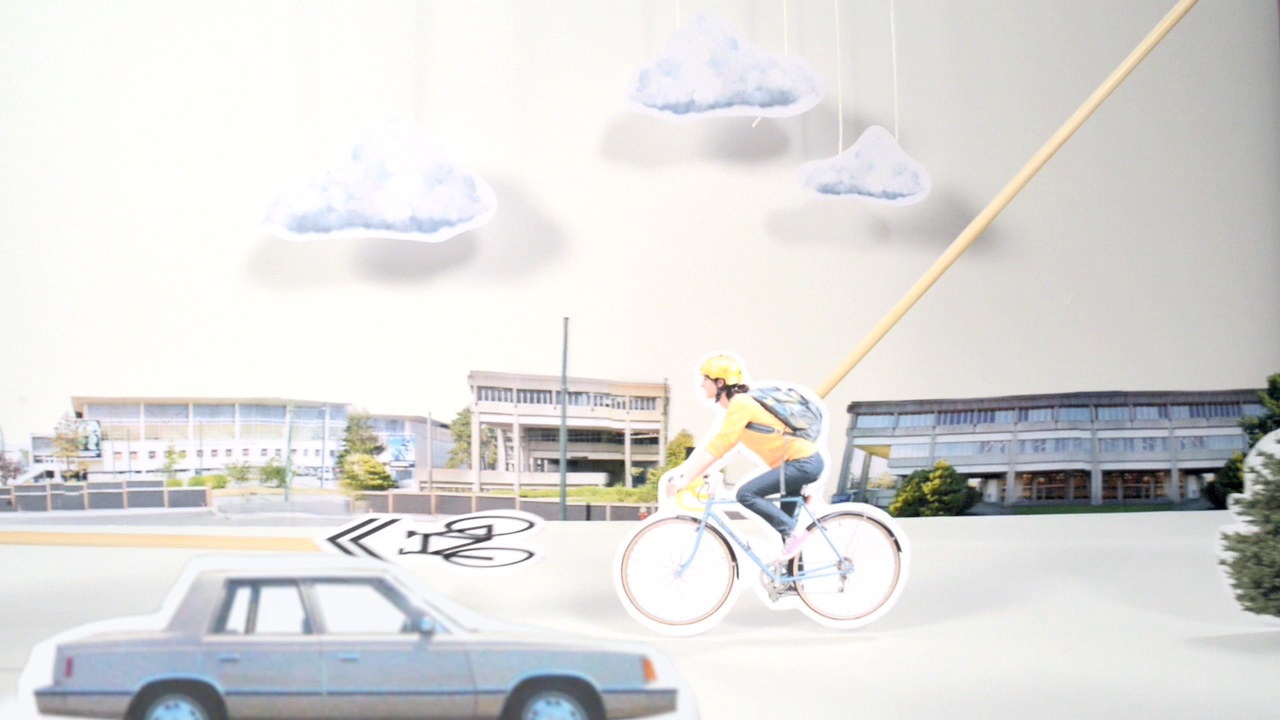
This comprehensive plan, an update to the 2014 Zero Waste Action Plan (ZWAP), sets ambitious goals for transforming UBC’s waste management and consumption patterns. Most notably, this plan shifted UBC’s vision from a linear "take, make, use, dispose" model to a circular economy, where materials are continuously reused and recycled, minimizing waste and environmental impact. The plan targets a 50% reduction in operational waste disposal (from 2019 levels) by 2030 to progress towards circular and zero-waste communities.
Why the shift is important
Shifting to a circular economy is pivotal in the global fight against climate change because 45% of necessary 2050 global emissions reductions require addressing the production of goods and materials, and circular economy strategies could eliminate almost half of these emissions. Transitioning towards a circular economy requires that things are made and consumed in a way that minimizes resource use, reduces waste, and reduces carbon emissions.

Launching the Circular Economy Action Team
Central to UBC’s journey towards a circular economy is the Circular Economy Action Team (CEAT), launched in 2023 as a SEEDS led collaboration. This interdisciplinary team of students, faculty, and staff from ten campus units is dedicated to advancing UBC’s Zero Waste Action Plan: Towards a Circular Economy. CEAT's mission includes developing a tailored definition of "circular economy" for UBC, setting benchmarks for measuring progress, and scaling up current and co-developing new circular initiatives.
In its first year, the CEAT team identified UBC’s Food Systems as one significant area of opportunity to initiate more responsible use of materials and help reduce GHG emissions. At UBC, the campus food systems are the second highest category in extended impact emissions after commuting, and from a global perspective, food systems are estimated to contribute between 21% to 37% of total anthropogenic GHG emissions.2 However, some studies suggest that when additional factors such as deforestation associated with agriculture and land-use changes are considered, the contribution of food systems to global GHG emissions could be as high as 50%.3 Therefore, while the exact percentage may vary, it is widely acknowledged that food systems play a significant role in driving climate change, and reducing emissions from these systems is essential for mitigating climate change.
To begin work toward a circular economy in UBC’s food system, CEAT has been fostering applied research collaborations between staff, faculty and students to better understand how progress might be made in two areas: reducing food waste and promoting reuse.
Tackling Food Waste: Research Insights and Interventions
Sustainable Places & Communities
According to the Food and Agriculture Organization of the United Nations (FAO), Food waste is a major issue, with one-third of all food produced globally—approximately 1.3 billion tonnes—lost or wasted every year. If food waste were a country, it would be the third-largest greenhouse gas emitter, behind China and the United States. In response, CEAT & SEEDS launched a Food Waste Research Cluster aimed at reducing food waste through better measurement and educational interventions.
To get started, student researchers from Land and Food Systems and Economics partnered with UBC’s largest food provider, UBC Food Services, to estimate quantities of post-consumer food waste generated by UBC’s recent shift to All Access Dining (AAD) in its Residence Dining Halls. Researchers sought to better understand food waste and identify interventions to reduce it.


Research revealed that key opportunities to reduce food waste in AAD included staff training to reduce food portion size, consumer education to ask for and destigmatize asking for smaller portions, adjustments in menus to cater to cultural and dietary preferences, and eliminating or addressing less-frequented menu items and/or food stations (such as the soup stations that have highest amount of food waste).
Further research exploring post-consumer food waste patterns at All Access Dining found that more food waste occurs when new dishes are introduced to dining halls. Therefore, another key recommendation was to propose samples for each new item introduced. By allowing students to taste new dishes before committing to a full serving, food waste could be significantly reduced.
Another key finding from the research was the impact of providing daily feedback on food waste. One of the most notable results showed that when students were informed daily about the amount of collective post-consumer food waste generated in the dining hall, there was a 40% reduction in waste. This highlights the importance of awareness and education: when the community is collectively made aware of how much they are wasting, they are much more likely to change their behavior. To action the results of this initial research, SEEDS will continue to support Food Services in measuring the effectiveness of interventions and actions to bring awareness around food waste reduction.

Driving Change: Reducing Single-Use Items on Campus
Circular Campus
CEAT, in collaboration with SEEDS, aimed to tackle another area of the food system this year: the prevalence of waste related to single-use items. Launching a cluster of research projects involving students, faculty, and staff from various faculties, including Psychology, Land and Food Systems, and Engineering, the goal was to baseline the use of Single-Use Items (SUIs) and their impacts, identify barriers to reuse culture, and develop strategies to overcome them.
One key project focused on baselining the prevalence of SUIs in the AMS Nest Building. This study utilized site visits, observations, surveys, and semi-structured interviews to map the prevalence of SUIs. The project compared current practices of providing single-use items with requirements outlined in the Zero Waste Food Ware Strategy (ZWFWS). The findings revealed several compliance issues, including food businesses being found providing self-serve cutlery automatically to customers instead of following the ZWFWS requirement that specifies patrons' need to request these items. These insights were shared with operational staff, who have committed to piloting alternative practices that align with a strategy to reduce food waste in the coming months. Ensuring compliance with the ZWFWS in the AMS Nest, as well as other outlets across campus, will help reduce waste from SUIs while providing a consistent experience across campus for the UBC community.


Researchers also took aim at the Zero Waste Action Plan's goal of reducing single-use coffee cups by 80% by 2030. Focused on disincentivizing the use of disposable cups, one notable project involved a behavioral intervention to determine if framing UBC’s current $0.25 fee on single-use coffee cups as a “saving” or a “loss” would impact patron behavior. The study found that neither framing significantly influenced behavior, likely because the fee was too small. However, displaying the cumulative effects of the fee, such as advertising the average yearly cost for patrons who failed to bring a reusable mug, had a noticeable impact. This could entail messaging such as “Disposable cup and container fees cost the average student $100 per year – Choose to Reuse for free”. This reframing strategy, and others like it, could effectively promote the use of reusable cups and containers, reducing demand for disposables.
Given these research findings, work is underway to update the “Choose to Reuse” campaign with new messaging that highlights the cumulative cost of disposable fees. “Choose to Reuse,” an initiative of UBC’s Campus and Community Planning, aims to promote the use of reusable cups and containers. The new messaging will be tested with students and community members through focus groups and surveys in the coming months to ensure its effectiveness. Once validated, the updated campaign will be formally re-launched next year.
